Wildflower will be back in 2018
This past weekend, for the first time in its 34-year history, the Wildflower Triathlon festival was not held on the first weekend in May. For half a decade Lake San Antonio remained spookily empty due to a drought that drained all but 7 percent of its water, but 2016 was a low point as dwindling entries forced race organizers to cancel the iconic event this year.
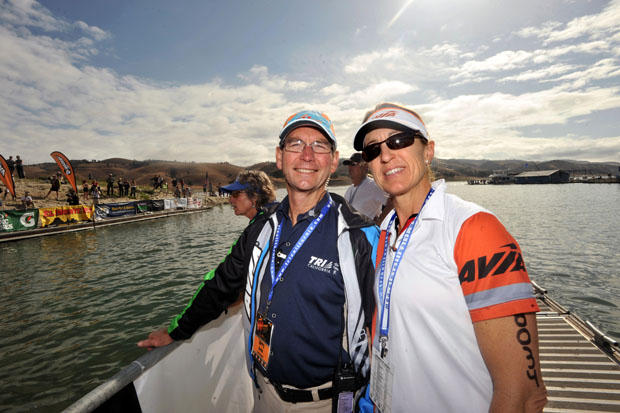
— Terry and Betsy Davis
Now hope is renewed. Tri-California president and Wildflower founder Terry Davis declared that the iconic half Ironman distance race will be held once again next year.
“Five years ago we had between 6,000 and 7,000 entries for the weekend of racing,” said Davis. “By the peak of the drought last year we were down to 2,200. Our break even point was 3,500 to 4,000 entries. With the time to properly prepare and promote Wildflower for 2018, we believe we can eventually get back those peak numbers, although we may start off with 4,000 entries in our first year back.”
After five years of a drought that lowered water levels in Lake San Antonio to 7 percent of capacity, strong winter snowfall in the Sierras and consistent rains throughout central California have raised water levels in the lake to 57 percent capacity. According to Davis, the water level in Lake San Antonio is now within 5 feet of its maximum depth. At the worst of the drought, the length of the lake was just 2.5 miles – now it is at 13.4 miles of 16 miles capacity. Whereas last year there was no water visible at the central Lynch Campground boat ramp, and the Wildflower swim was moved 2 miles away to Harris Creek, now the recently empty lake is virtually full.
While Davis and his Tri-California team managed to move the swim to Harris Creek and put on races that utilized all of the classic bike and run course, he says that the public lost confidence that the race was on healthy footing. “There was always enough water and having a swim wasn't a problem,” said Davis. “It was just people’s perception that we weren't going to have an event and it wouldn’t be as good. So we could not sustain the numbers we needed to keep going.”
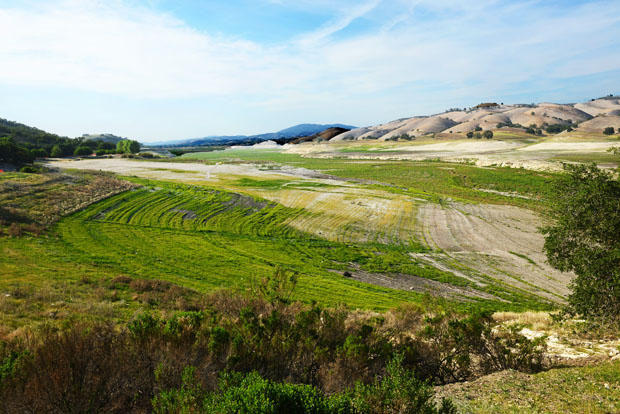
Davis and his crew were willing, but the drop in income from dwindling entries was made worse by the added expense of moving the swim start. “Actually the cost to run it was so much more because of the need to offer transportation to Harris Creek and building a different start area. Due to all those types of things, the costs were in the neighborhood of $50,000 higher than before.”
So why is he optimistic that the triathletes will come once again? “It is basically all about water levels,” said Davis. “If you have water they will come.”
So why not have the race this year? “We’ve had hundreds of calls wanting to know if we were going to be operating this year,” said Davis. “They see all this water why not have an event? The problem is everybody makes their race calendar and selects their races in December. If you are not back in business at that time, they are making the decision to go to other races.”
Davis says the return of a full Lake San Antonio has given his team the time they needed to sell next year’s race. “We have to have all out notices and marketing done before the first of September,” he said. “That way we can let people know that yes, we are going to be putting on a race.”
Putting on a race on the scale of Wildflower is a large operation and starting up again is a little bit like turning around an ocean liner. “We have about 1,200 to 1,500 volunteers from Cal Poly clubs and student organizations,” said Davis. “They are supervised by 100 Cal Poly core workers. And we have another 60 staff and Tri-Cal people. In addition, we have about 50 medical personnel on site.”
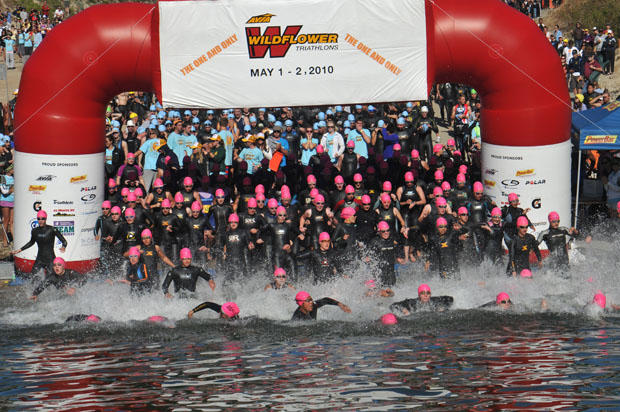
This year, Davis and Tri-California also canceled their other key triathlons including Pacific Grove and Scott Tinley’s Off-Road Adventures at Lake Lopez near San Luis Obispo. He said it is unlikely they will bring those back the first year. “We won’t do those,” said Davis. “We might do Pacific Grove in 2018. It will depend a bit on how quickly people sign up for Wildflower. If we can have cash flow from Wildflower and things like that, we can work on Pacific Grove. Because it takes less advance time for an Olympic distance race.”
Davis sees Wildflower as a survivor in an era of an expanding roster of worldwide distance triathlons. With so many more races around the globe, has the nature of the triathlon tribe changed a bit? Are there fewer people looking for a bigger challenge? Do many more prefer easier courses and faster times?
“I think the long distance races are basically competing against all the Ironman races,” said Davis. “That is our competition for that distance. We will need them to come back to Wildflower. I think in the Olympic or the sprint distances, it is even more difficult. There are a lot more Olympic distance races in northern and southern California. Same thing around the country. So the ones who come to Wildflower want the Wildflower Experience. That’s something you can’t get at any other race. It has always been that way.”
Davis said he was surprised that St. Croix 70.3, one of his long time competitors for the early spring crowd, is shutting down after a 2017 farewell race. When asked what that tells him, Davis said are several factors. “Depends on what the reasons are,” he said. ” Is it financial? Is it community regulations? There are a lot of things other than financial that keep races from happening. Government agencies keep making more regulations and the permit process keeps getting more difficult. The requirements of government agencies nationwide are probably 5 to 10 times greater than when we started out. You might have to have twice as much medical as in the past. Or instead of five agencies, you might have to deal with 12 agencies. And each of those agencies may require several man hours to fulfill. You might have to provide more mapping. More reports. More details.”
So what does Wildflower mean to the sport of triathlon? “It is one of the iconic events,” said Davis. “And you might say that so goes Wildflower, so goes the sport. I think Wildflower means there are still independent races and independent race directors. The sport is not all corporate, not all Ironman. There is still life in the sport.”
Davis said he received permission to hold the Wildflower Triathlon festival on the first weekend in May of 2018 from Monterey County Parks Department special events manager Lavonne Chin. Lake San Antonio is having what officials termed a "soft opening" for recreation customers from April 14 to May 14 this year and will be open seven days a week starting May 19.


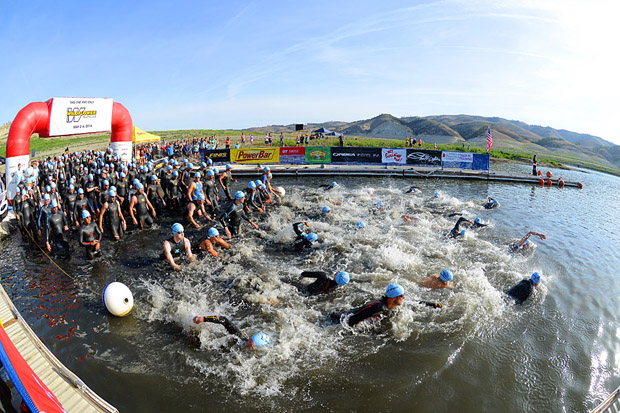

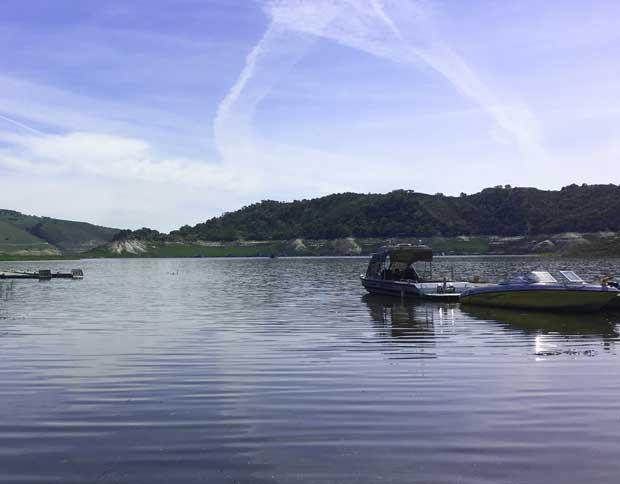
Start the discussion at slowtwitch.northend.network